People
‘I Only Really Have Fun at My Own Parties’: Meet Tolga, the Man Who Throws the Wildest Ragers in the Art World
He's been hosting the best parties at art fairs for the better part of the decade. Here's the whole boozy story.
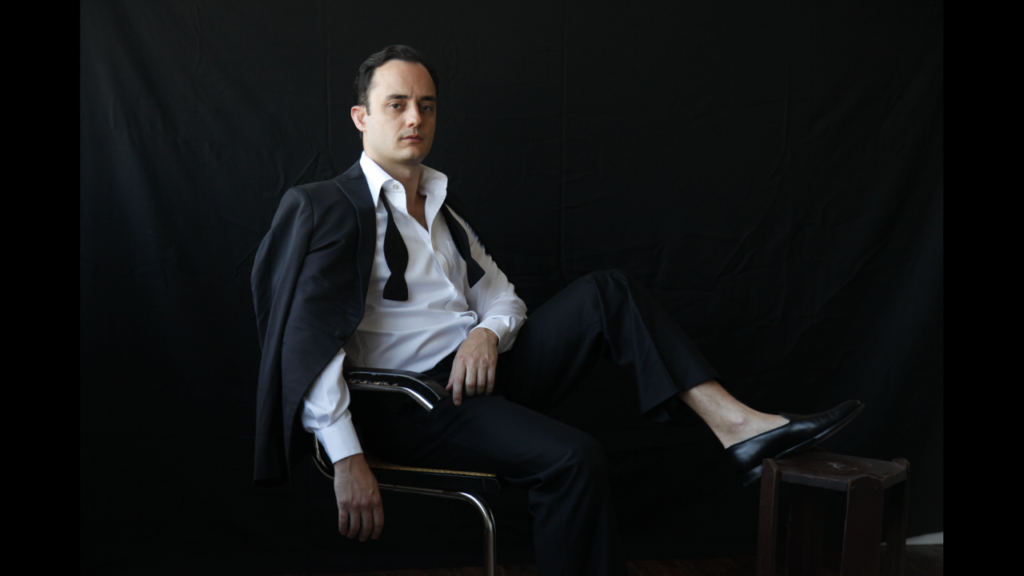
He's been hosting the best parties at art fairs for the better part of the decade. Here's the whole boozy story.

Nate Freeman

With the proliferation of art fairs around the world, the traveling band of its best and brightest goes from one city to the next, cohabitating the classic redoubts of one city one week, and another on the other side of the world the next.
The circuit is an unending cocktail bar, only slightly tweaked from stop to stop, continent to continent, accessed easily through the miracle of private air travel. There have been times when I could have sworn there was a wormhole that sends collectors from Bemelmans Bar on the Upper East Side to Dukes in London to the Captains Bar in Hong Kong, given how quickly they shuttle from one to the next. And it’s the same for dinner, too: the same crowd at their same usual tables at the Daniele in Venice or Chez Donati in Basel or the Chateau Marmont in Los Angeles.
But after dealers and collectors break bread over hours-long dinners at swank boîtes, there’s another global circuit: a series of earsplitting all-night bangers thrown around the world by one guy, Tolga Albayrak, the man who makes the art world party. For the better part of the past decade, Tolga (everyone just calls him Tolga) has thrown bashes at nearly every major art fair, flying in famous DJs to spin for the cult of art collectors and gallery owners who let loose after a long day of making millions of dollars offloading contemporary art. This is not a cocktail affair at Harry’s. This is a midnight-til-dawn blitzkrieg of death-from-above electro-noise that keeps even the most buttoned-up old-timers boogieing until the sun rises.
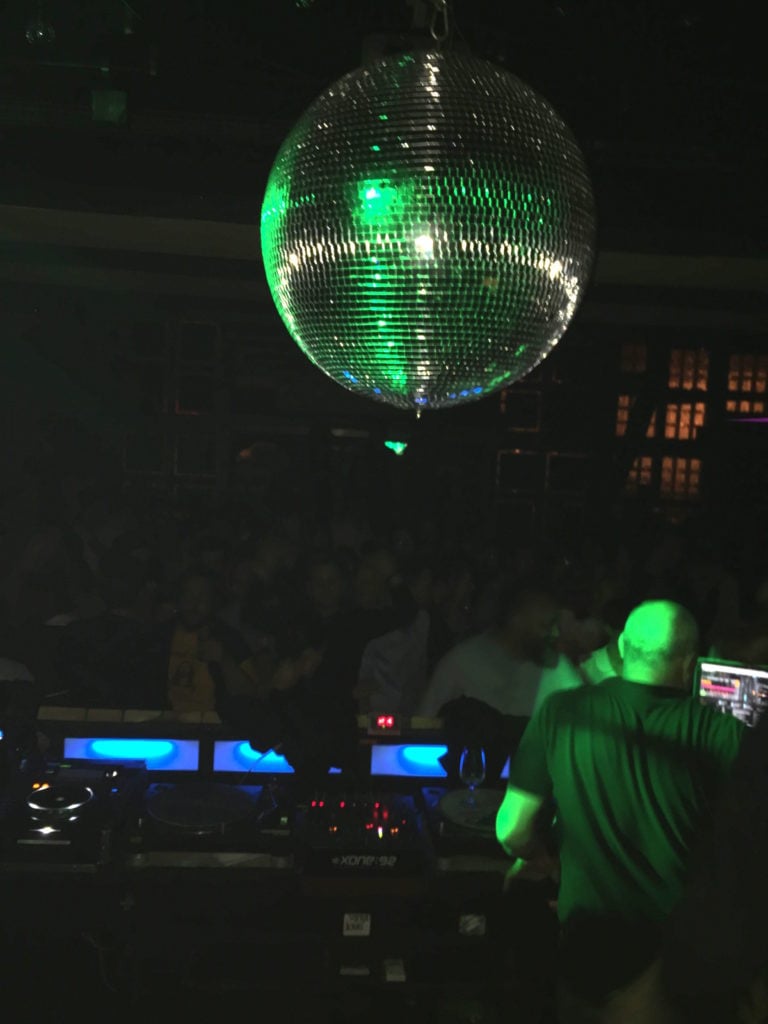
The view from the DJ booth at the party at Hinterhof in Basel. Photo: Nate Freeman.
“You find yourself in an environment where everybody—whether they like each other or not, whether they’re rivals or not—they’re just having this time,” Tolga told me recently. “It’s a little aggressive. You have to accept the music, accept the venue, but then you’re there.”
“This might be pompous to say,” Tolga added, “but I only really have fun at my own parties. Because I do them.”
We were chatting a few days before the opening of the Miami edition of Art Basel, the first fair that bet that contemporary art collecting could be more than just a hobby for the tippy top of the moneyed elite: it could be a lifestyle—now an Instagrammable one—that could attract non-collectors who just want a piece of the action. It’s also the site of one of Tolga’s Director’s Cut parties—the crown jewels of his party empire—which he throws with Marc Spiegler, the director of Art Basel.
When it came time to talk again, Tolga and I were on different continents—he was in Paris, I was in Washington, DC—so we spoke on the phone. I’ve known him for years, and have had the pleasure of attending a dozen or so of his parties. In November, he threw a party at the Public, a hotel on the Lower East Side, for Performa, the performance art biennale. I found him in the middle of the DJ booth. A house remix of an ASAP Ferg track was sending wob-wob-wob thuds blasting over the speakers. The sound rattled empty champagne flutes on tables. Waitresses were carrying vodka bottles in steel ice buckets, and the bottles were outfitted with sparklers that flickered in the air. As a miasma of art dealers and Performa patrons swanned around him, Tolga—who has long lived in France but is Turkish by birth, and possesses the sly, crinkly-eyed smile of a bad guy in a Godard flick—brought me into the DJ booth to survey his domain of raging. Suddenly he grabbed me by both shoulders and yelled, “Great party, right!”
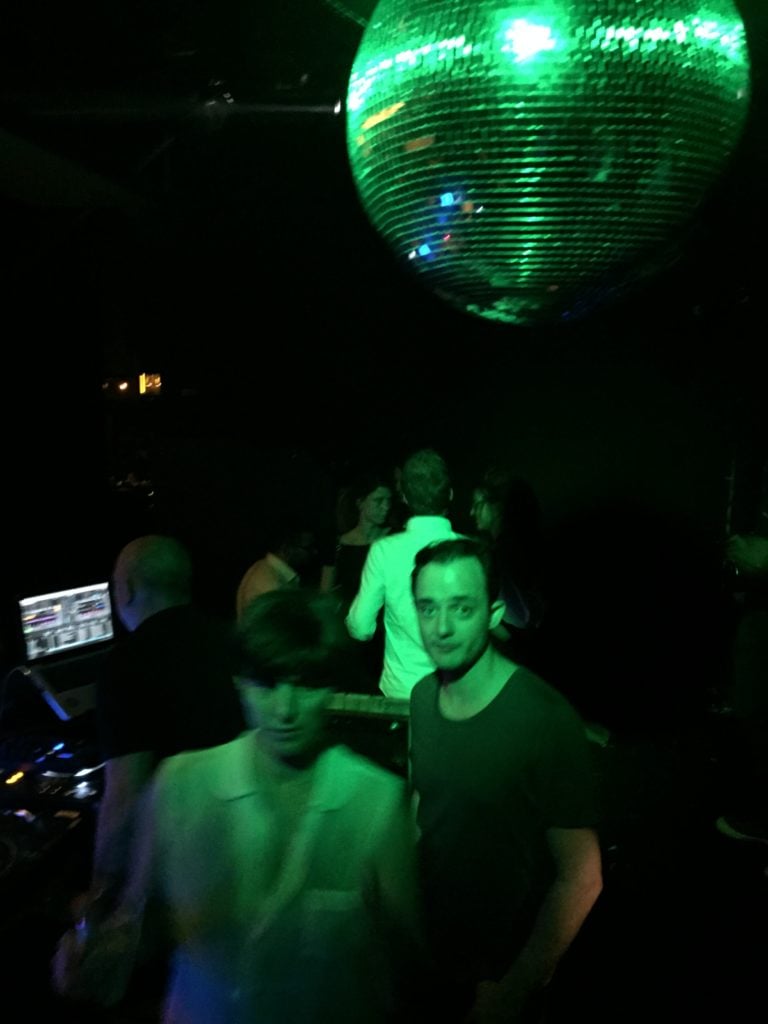
Tolga at Hinterhof, in Basel, Switzerland. Photo: Nate Freeman.
Many in the art world have wondered where, exactly, Tolga came from. After graduating from school, he worked as a party promoter in Paris, principally with graffiti artist André Saraiva at Le Baron, a club Saraiva opened in a former strip joint in 2004. By 2007, Saraiva had partnered with Art Basel global director Sam Keller and French mega-dealer Emmanuel Perrotin to open Le Baron pop-ups in Venice during the Biennale, in Miami during the fair, and in Basel on Das Schiff, a moored boat on the river on the outskirts of town that hosted parties raucous enough that it always felt like the whole thing was one sick DJ drop away from snapping off its chains and floating down the Rhine.
Tolga helped stage those pop-ups, running the music and busing in scruffy models and hip artists. In 2012, he was called to New York to open a permanent Le Baron on the edge of Chinatown. (That Le Baron, along with the original Paris locale, have since closed.) But Tolga left after six months, and by 2013 he was feeling restless. In May, during the second edition of Frieze New York, he set up a project with the artist Tobias Rehberger, a bar/performance at the Hotel Americano in Chelsea where he rebuilt a watering hole he likes in his hometown of Frankfurt, but this time in the middle of New York’s main gallery district.
By then, the Le Baron outposts were flagging. Saraiva’s original partner-in-crime, Sam Keller, had left Art Basel to head up the Beyeler Foundation, and handed the mantle to Marc Spiegler. And Tolga said that, when Le Baron did show up, the exhibitors and dealers couldn’t even get in.
“There was something missing. You were doing a party, but there were a bunch of people who were treating Miami Art Basel as a festival, just a thing to go to at that period of the year,” Tolga said. “None of the real people—the artists, or the galleries, or the real participants who were in the fair—they weren’t coming.” He added: “We hated the music.”
As it happens, Spiegler is, like Tolga, a dance-music fanatic and connoisseur of the world’s top DJs. So they thought of a way to bring these elements to art fairs.
“We just sat down and we said, ‘Why should we not create what we want, tailored to our aspirations?” Tolga said. “So we said, ‘We’ll do a private party, only invite my friends, and Marc’s friends’—and also Marc’s clients, the galleries—and we’re going to have our music, dictated to the crowd, whether they like it or lot. We pick the best specimens. We got the best DJs in the world. But they play with fake names, so nobody knows who they are until they show up. Even if you don’t like that, you come, you listen, you be present, and you can’t help yourself because it’s so good. We have the best people in the world that do that.”
But while Spiegler is still a strong supporter, he told me that when it comes down to it, the whole thing is Tolga’s show. And nowhere is that more clear than at the party in Basel. Tolga found the venue in 2013, when he was asked to do the music for a party thrown by Keller’s museum to honor Maurizio Cattelan, who had a show up that year. Called the Hinterhof (German for “backyard”), it was a warehouse bar down a lonely highway that shoots out of Basel, and it was done up into different theme rooms: a love-themed room, a tiki-bar room, and so on. Tolga and Spiegler liked the venue, and decided the next year, he would take over the Hinterhof for what he called “Tolga’s Fair Club.”
I was there in 2014. It was my first exposure to the rare charm that Tolga’s events can have, the way his parties can turn the well-heeled dealers and collectors who just hours earlier stalked the aisles of the world’s most prestigious art fair into dancing madmen, many chaining cigarette after cigarette, dancing beside bottles of tequila in buckets behind the DJ booth.
“Nobody did that in Basel, nobody was doing a party like that,” Tolga said. “There were some parties, but it was civilized—it was, like, dancing after a dinner. The party we did at Hinterhof was complete debauchery.”
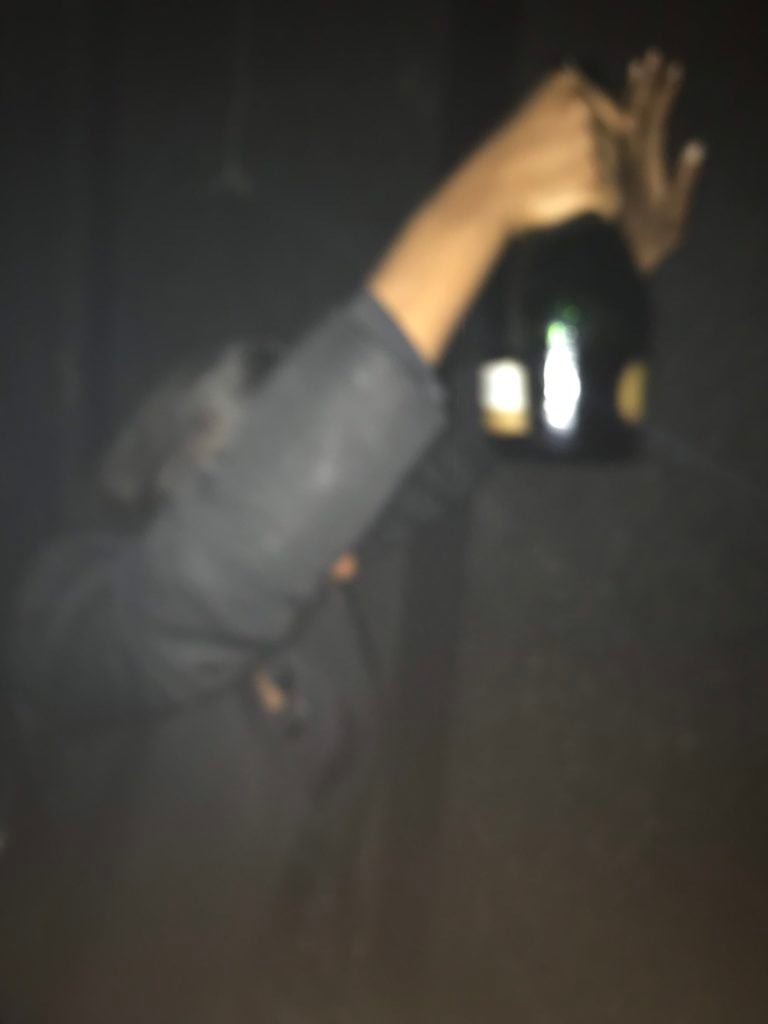
A scene from the party at Hinterhof in Basel. Photo: Nate Freeman.
Tolga threw other parties besides those at the three branches of Art Basel, mostly because friends (and paying clients, such as BMW) wanted to retain his services. There were parties at the Boom Boom Room and Happy Ending, the now defunct Chinatown nightclub. In 2015, there was a party at That That, a Dallas apartment gallery that acted as a salon for those in town for the Dallas Art Fair. There were Tolga’s Fair Club parties at the Condesa Hotel in Mexico City during Zona Maco, and Scotch of St. James in London during Frieze.
In 2016, he launched a Director’s Cut party in Hong Kong at Volar, a famous after-hours spot in Lan Kwai Fong. The Hong Kong edition has become particularly notorious. In 2018, I arrived to see that a massive police raid had been sicced on the nightclub, forcing myself and those in my car—some editors, a prominent fair director, and the director of a very important Chinese museum—to wait out the authorities by drinking cans of Sapporo at the 7-Eleven across the street.
In Miami—a city where the mania of the lifestyle birthed by the fair’s arrival has now drowned out the art itself—Tolga bends over backwards to cater to Basel’s exhibitors and their staff by having the party on Sunday, after the crowds have left. Spiegler said that it’s critical to have such a party fall at the end of the week.
“The idea for the event was to do an informal night towards the end of the fair with great music, no guest list, and no door policy—a place where all of our gallerists, their staffs, the Art Basel team, and all the other people who work all week can relax and have fun together,” he said.
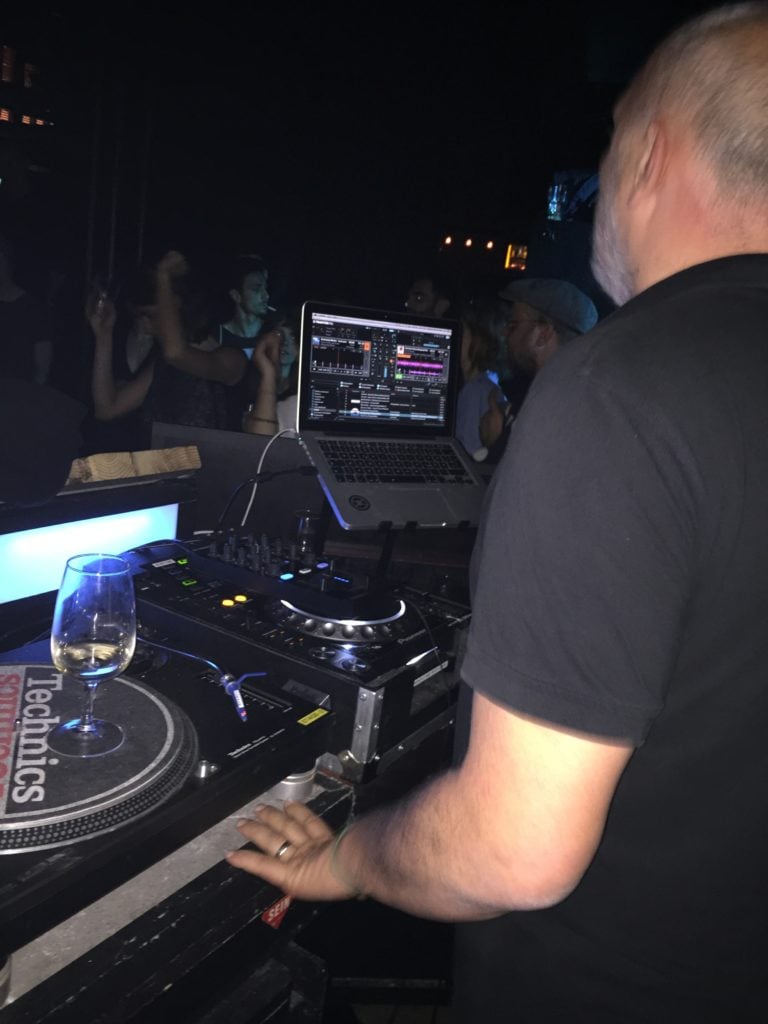
The DJ booth at the party at Hinterhof in Basel. Photo: Nate Freeman.
It’s held at Wall, the venue deep inside the W’s South Beach complex that plays host to some of the week’s starriest events, and boasts one of the best nightclub sound systems in a city with a hell of a lot of nightclubs.
“It’s a bottle club, they sell tables, and two nights before my party, Paris Hilton is fucking DJing there,” Tolga said.
And all the parties stay true to the original mission of prioritizing the music over anything else. (Sorry, Paris.)
“You’re sipping on Casa Dragones and you’re listening to Dixon or DJ Tennis and you didn’t even know they were going to be there—and they’re playing together, which has never been seen before,” Tolga said. “It’s this thing now. Even the biggest collectors in Germany and whatnot, they’re telling me, ‘Oh I went to see Dixon.’ It’s like going to a three-star Michelin restaurant.”
It’s those three Director’s Cut parties—in Miami, Hong Kong, and Basel—that will remain the crux of Tolga’s empire going forward. And he wants to keep them going for as long as the fairs are going.
“I actually do it for myself,” Tolga said. “I’m a little bit egotistical about it, because this is what I like, and I want to live it.”
He paused, and the phone line went silent for a second.
“But, it’s not that serious,” he added. “It’s just a party.”